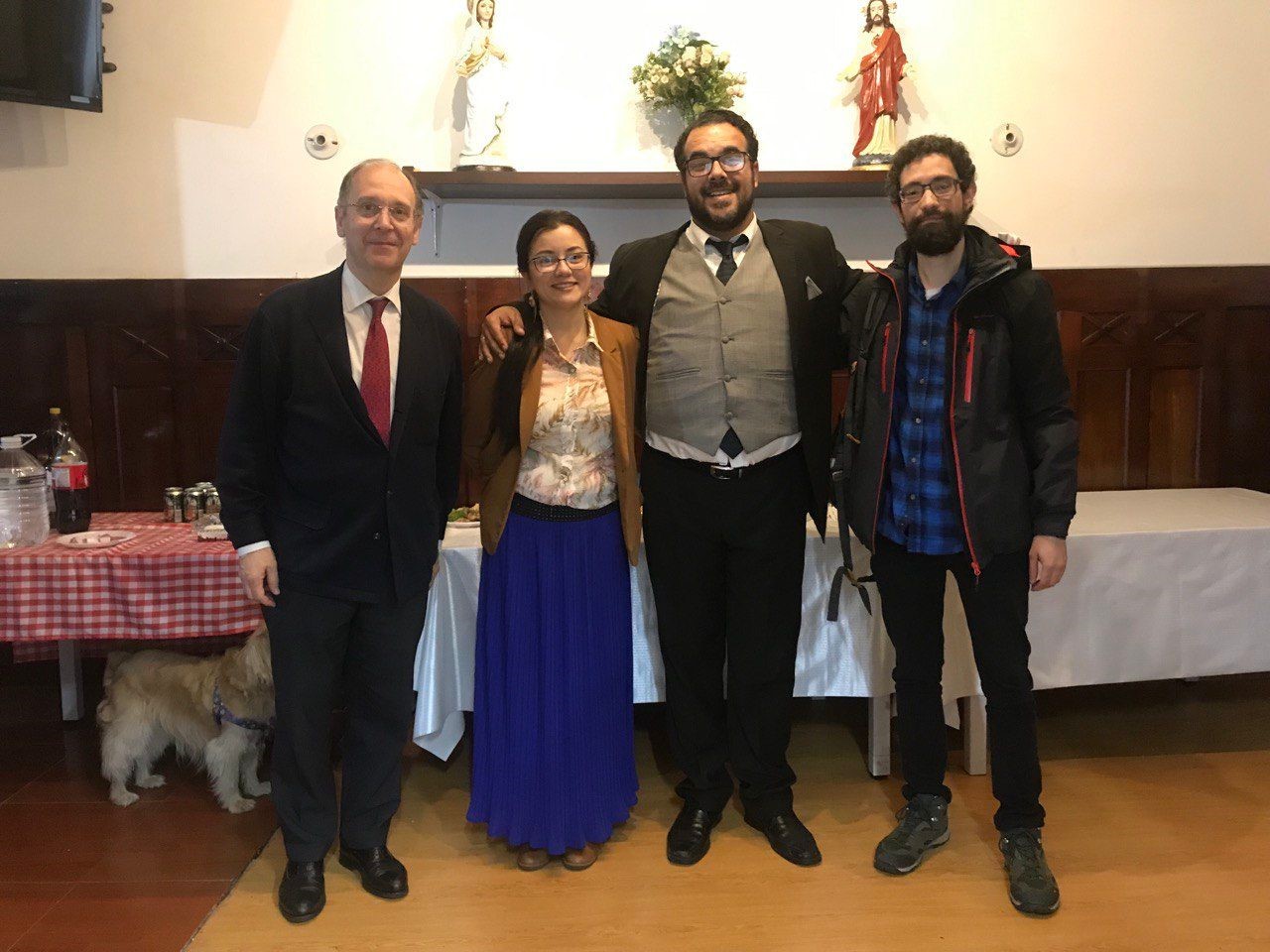
(Versión en español más abajo)
I am happy to report another successful Rosary March in San Antonio, Texas, for the consecration of our state to the Sacred Heart of Jesus. However, it was not without its trials. The first was that Texas is very hot in the month of August; temperatures reached 106 F during the march. Secondly, the police are quite antithetical to our cause, and once again informed me that public prayer is not allowed in front of the Alamo, but is only permitted in the designated «free speech zone» nearly a block away. The policeman also informed me that no one is allowed to take pictures in front of the Alamo holding flags or religious items. Please keep in mind that the Alamo itself was originally named Misión de San Antonio de Béxar, and was a Roman Catholic church and mission. Please, understand as well that the flags that I held were the flag of the state of Texas, and the flag of the Cross of Burgundy, which was the same as the flag of New Spain, one of the original Six Flags to fly over Texas.
Adding to the adversities afflicting the march, I have recently come down with a sinus infection as well as an upper respiratory infection for which I am taking amoxicillin among other treatments. Near the end of the march, as we proceeded once again in front of the Alamo, I began to feel ill. Luckily for me I had a great group of dedicated individuals surrounding me. One pious and dedicated man named Rigo stepped in to take over leading the prayers as I regained my breath. And so, as one fell, another stepped in to take up the banner of Our Lord and continue with the fight. Don Rigo is the member of my unit that brings a crucifix with him on the marches, and it was fitting that he was the one to help carry the cross on that day.
Recently, I was reading about the structure of the Requeté units, and the person who carries the crucifix is called the Cristóforo, or literally «he who carries Christ». In a Requeté unit, the Cristóforo has the rank of corporal, or sergeant. Sergeant comes from the Latin serviens, «he who serves». This member of the group is the non-commissioned officer of sufficient rank to lead in place of the officer in his absence.
Upon finishing the rosary march, I informed this gentleman that he will be the sergeant of our regiment and will lead in my place if anything happens to me. I presented him with a Saint Christopher medal and asked him to join the Carlist Circle as well. I let him know that I intend that he assume the role of Cristóforo for our unit, and that he holds the rank of Sergent from now on. In so doing, I attempted to keep alive the traditions of the Requetés that came before us.
I would like to take the opportunity to welcome Sgto. Rigo as the newest member of the 6º Reg. del Círculo Carlista Camino Real de Tejas!
Viva Cristo Rey! Ave Christus Rex!
Alfz M. Scullin, Círculo Carlista Camino Real de Tejas

***
(Traducción al español)
Me siento feliz de poder informar de la celebración de otra caminata del Rosario en San Antonio, para pedir la consagración de Tejas al Sagrado Corazón de Jesús. A pesar del éxito obtenido, esta nueva caminata no estuvo exenta de dificultades. La primera de ellas fue el caluroso clima de Texas durante el mes de agosto; las temperaturas alcanzaron los 41ºC. durante la marcha. En segundo lugar, la policía es bastante hostil a nuestra Causa, y una vez más se me informó que no se permite la oración pública frente al Álamo, sino sólo en la denominada «zona de libertad de expresión» designada a casi una cuadra de distancia. El policía también advirtió que no se permiten fotos frente al Álamo con banderas u objetos religiosos. Ignoran que el Álamo en sí se llamaba originalmente Misión de San Antonio de Béjar, y era una iglesia y una misión católica romana. En esta línea, tampoco entienden que las banderas que sostuve eran la bandera del estado de Tejas y la bandera de la Cruz de Borgoña ―que era la misma que la bandera de Nueva España―, una de las seis banderas originales que ondeaba sobre Tejas.
Además de las adversidades que aquejan a la caminata del Rosario, recientemente contraje una infección de las vías respiratorias superiores. Cerca del final de la marcha, mientras avanzábamos una vez más frente al Álamo, comencé a sentirme mal. Afortunadamente para mí, tenía un gran grupo de personas dedicadas a mi alrededor. Un hombre piadoso y dedicado llamado Rigo intervino para dirigir las oraciones, mientras yo recuperaba el aliento. Y así, mientras uno caía, otro intervino para tomar el estandarte de Nuestro Señor y seguir con la lucha. Don Rigo es el miembro de mi unidad que trae un crucifijo con él en las marchas, y era apropiado que él fuera quien ayudara a llevar la cruz ese día.

Hace poco estuve leyendo sobre la estructura de las unidades de los Requetés. A la persona que lleva el crucifijo se le llama el cristóforo, o literalmente «el que lleva a Cristo». En una unidad de los Requetés, el cristóforo tiene el grado de cabo o sargento. Sargento viene del latín serviens, «el que sirve». Este miembro del grupo es el suboficial de rango suficiente para liderar en lugar del oficial en su ausencia.
Al terminar la caminata del Rosario, nombré a Rigo, que así se llama, sargento de nuestro regimiento y ocupará en mi lugar si algo me sucede. Le entregué una medalla de San Cristóbal y le pedí que se uniera también al Círculo Carlista. Le hice saber que tengo la intención de que asuma el papel de cristóforo de nuestra unidad, y que de ahora en adelante ostente el grado de Sargento. Al hacerlo, intenté mantener vivas las tradiciones de los Requetés que nos precedieron.
¡Aprovecho para dar la bienvenida al Sgto Rigo como nuevo integrante del 6º Reg. del Círculo Carlista Camino Real de Tejas!
¡Viva Cristo Rey! Ave Christus Rex
Alfz M. Scullin, Círculo Carlista Camino Real de Tejas



